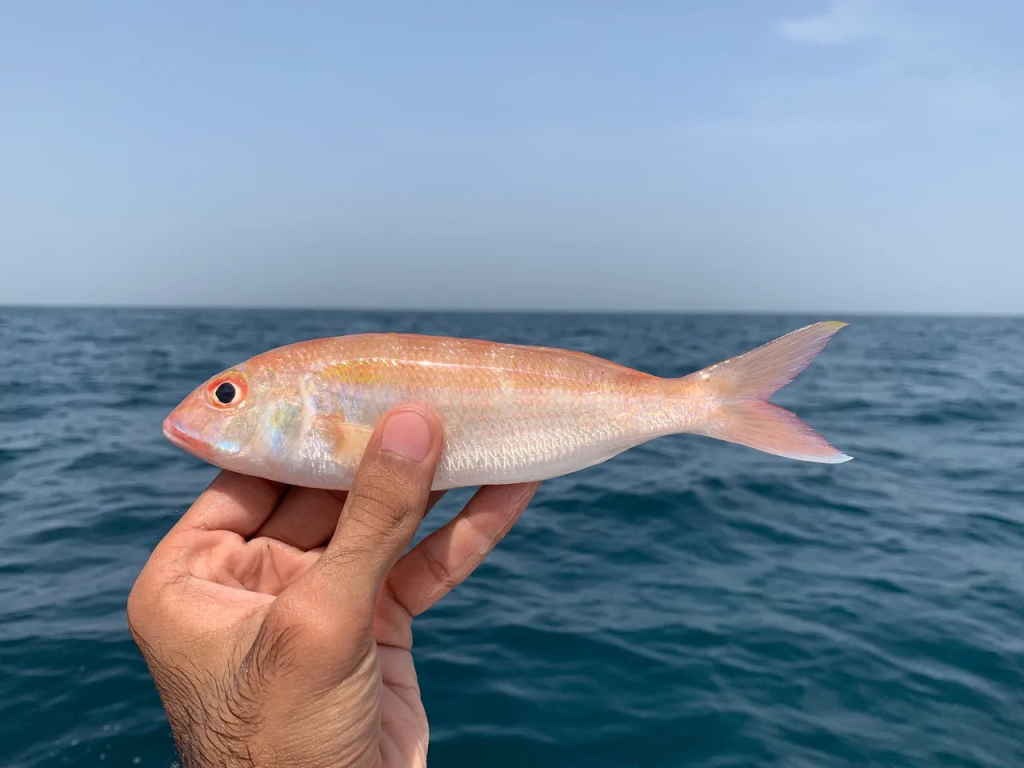Sultan Ibrahim fish, or threadfin bream, is one of the most sought-after fish in Middle Eastern and European dishes. The fish is and has always been appreciated among food lovers for its colorful skin, the tenderness of its flesh, as well as the light flavor it possesses. This is often referred to as ‘King’ for the unparalleled reputation it has among seafood lovers. In addition, it is an integral part of numerous traditional recipes because of its health benefits and flexible uses in cooking.
Habitat and Physiological Features of Sultan Ibrahim fish
This stands out due to their vibrant red or pink coloration, their elongated bodies, and unique barbels under the chin. These characteristics not only enhance their beauty but also assist in scavenging on sandy sea bottoms. This fish is usually from 10 to 40 inches long and is found in coastal shallow waters with sandy or muddy bottoms. They are located in the Mediterranean Sea, the Northeast Atlantic Ocean, and parts of the Indian Ocean.
Nutritional Information
Apart from their beauty, they also have a lot of nutritional value. They are high in protein, an important constituent for muscle growth and repair. Omega-3 fatty acids are abundant in these fish, making them helpful for improving heart health and the health of the brain. Not to mention, they are a great source of essential vitamins and minerals Vitamin D and B12, phosphorus, as well as selenium translates to overall fitness and health.
Cooking Methods of Sultan Ibrahim Fish
The firm flesh and mild flavor of threadfin bream make for many different cooking options.
Grilling, seasoning with herbs and lemon, is one of the common preparations that bring out the natural flavor. Frying is another common method where the fish is floured lightly and fried to a golden crisp. Other methods of preparation include baking where vegetables and aromatic spices can be added or stewing, which is popular for Mediterranean dishes that use fish with tomatoes, olives, and herbs. In Middle Eastern cuisine, Sultan Ibrahim is fried to perfection after being marinated with spices in a dish called Samak Maqli.
Purchasing and Storage Tips
Threadfin bream features clear eyes, red gills, and firm flesh, making it look fresh. Specialized fishmongers who have high standards for seafood are good places to purchase seafood to ensure quality. They should be consumed within two days, so placing them in the colder section of the fridge is a good start. Having them cleaned and wrapped before freezing him extends that period drastically.
Cultural and Culinary Significance in the Middle East
Because of its tender texture and delicate flavor, people prefer it. Sustainable fishing practices are crucial for sustaining the population of threadfin bream. Understanding this will allow for more rational guidelines to be established. Sultan Ibrahim’s fish need effective fishing techniques to help sustain the species and protect the delicate balance of life in ocean habitats.
Health Benefits and Nutritional Value of Sultan Ibrahim Fish
Threadfin bream is rich in proteins, essential omega-3 fatty acids, vitamins, and other nutrients, which provide a wide range of health benefits, including for the heart and brain. Therefore, it is an important part of a balanced diet. This fish is very beneficial for you if you try to preservice their natural nutrients.
Conclusion
The sultan Ibrahim fish reflects the culinary history of the people residing in the Mediterranean and the Middle East. Its nutritional and health benefits have made it a popular ingredient in many dishes and cuisines. From grilling and frying to stewing, sultan Ibrahim can be used in meals crafted in myriad ways, resulting in an amazing culinary journey. Learn to cook and enjoy your food.
FAQs
1. What is the scientific name of the Sultan Ibrahim fish?
Its scientific name is Nemipterus japonicus, and it is also referred to as the threadfin bream.
2. Where is Sultan Ibrahim fish commonly found?
It is distributed in the Mediterranean Sea, the Northeast Atlantic Ocean, and parts of the Indian Ocean, where it prefers sandy or muddy coastal regions.
3. How can I tell if threadfin bream is fresh?
Fresh specimens have clear eyes, gills of reddish gills, and firm flesh, giving off a mild scent reminiscent of the sea.
4. What are the health benefits of consuming threadfin bream?
This species is a good source of proteins, omega-3, vitamins, and minerals, which are essential to the heart, brain, and general body functions.
5. Can threadfin bream be frozen for later use?
Provided that the fish is cleaned properly, it can be frozen. After cleaning, the fish should be tightly wrapped so that it does not suffer quality loss during freezing.
6. What are some well-known dishes that utilize threadfin bream?
Popular dishes include Samak Maqli (fried fish), grilled dishes with herbs and spices, and stews with tomatoes and olives.


